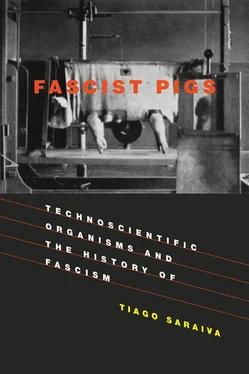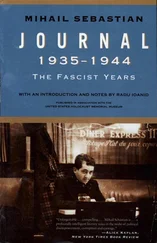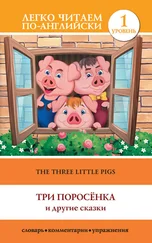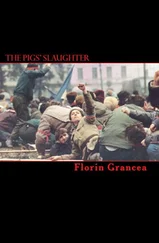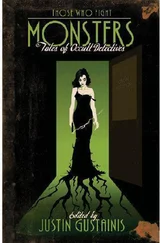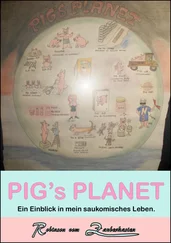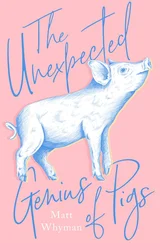Large farms of Karakul in northern Europe were constantly afflicted by multiple diseases.
Brenda Bravenboer, Karakul—Gift from the Arid Land: Namibia 1907–2007 (Karakul Board of Namibia and Karakul Breeder’s Society of Namibia, 2007); Jacobus Andreas Nel, A Critical Study of the Development, Breeding and Care of the Neudam Karakul Stud, MSc thesis, University of Stellenbosch, 1950.
Bravenboer, Karakul , pp. 46–47.
These animals were the basis of the government’s stud farm in South West Africa, located at the Research Station Fürstenwalde (15 km west of the capital, Windhoek), which subsequently was to be one of the sources for Karakul production in the colony.
On German South West Africa, see Helmut Bley, Namibia under German Rule (LIT, 1996); Horst Dreschler, Südwest Afrika unter deutscher Kolonialherrschaft (Franz Steiner, 1996); Helmuth Stoecker, German Imperialism in Africa: From the Beginnings until the Second World War (Hurst, 1986); Jürgen Zimmerer and Joachim Zeller, eds., Völkermord in Deutsch-Südwestafrika. Der Kolonialkrieg (1904–1908) in Namibia und seine Folgen (Christoph Links, 2003); George Steinmetz, The Devil’s Handwriting: Precoloniality and the German Colonial State in Qingdao, Samoa, and Southwest Africa (University of Chicago Press, 2007); Janntje Böhlke-Itzen, Kolonialschuld und Entschädigung. Der deutsche Völkermord an den Hereros 1904–1907 (Brandes und Apsel, 2004).
Isabel V. Hull, Absolute Destruction: Military Culture and the Practices of War in Imperial Germany (Cornell University Press, 2005).
See Jürgen Zimmerer, Von Windhuk nach Auschwitz? Beiträge zum Verhältnis von Kolonialismus und Holocaust (LIT, 2011); Jürgen Zimmerer, “Colonialism and the Holocaust: Towards an archeology of genocide,” in Genocide and Settler Society: Frontier Violence and Stolen Indigenous Children in Australian History , ed. D. A. Moses (Berghahn); Benjamin Madley, “From Africa to Auschwitz: How German Southwest Africa incubated ideas and methods adopted and developed by the Nazis in Eastern Europe,” European History Quarterly 35, no. 3 (2005): 429–464.
Robert Gerwarth and Stephan Malinowski, “Hannah Arendt’s ghosts: Reflections on the disputable paths from Windhoek to Auschwitz,” Central European History 42 (2009): 279–300.
Shelley Baranowski, Nazi Empire, German Colonialism and Imperialism from Bismarck to Hitler (Cambridge University Press, 2011), p. 48.
Ibid., p. 47.
According to Theodor Leutwein (the governor who preceded von Lindequist, serving from 1894 to 1905), the aim of the colonial policy toward the natives was to create a “sedentary labor force, which is satisfied with its wages” (quoted on page 208 of John K. Noyes, “Nomadic landscapes and the colonial frontier: The problem of nomadism in German South West Africa,” in Colonial Frontiers: Indigenous-European Encounters in Settler Societies , ed. L. Russell (Manchester University Press, 2001).
Helmuth Stoecker, ed., German Imperialism in Africa: From the Beginnings until the Second World War (Oxford University Press, 1986), p. 62.
Guido G. Weigend, “German settlement patterns in Namibia,” Geographical Review 75 (1985): 156–169.
A survey of farms undertaken in 1982 didn’t show a single black-owned farm in the southern part of the country, where Karakul dominate the landscape.
Baranowski, Nazi Empire , p. 48. Not until the occupation of South West Africa by the Union of South Africa after World War I was forced labor legally abolished. On labor relations in South West Africa, see Wolfe W. Schmokel, “The myth of the white farmer: Commercial agriculture in Namibia, 1900–1983,” International Journal of African Historical Studies 18, no. 1 (1985): 93–108.
Noyes, “Nomadic landscapes,” p. 204.
Ibid., p. 205.
Ricardo Roque, “Mimesis and colonialism: Emerging perspectives on a shared history,” History Compass 13, no. 4 (2015): 201–211.
Such a northeast/southwest division corresponds to a climatic division.
D. C. Krogh, “Economic aspects of the Karakul industry in South West Africa,” South African Journal of Economics 23 (1955): 99–113.
Frölich and Hornitschek, Das Karakulschaf, p. 31.
On Germanness in German colonial context, see Willeke Sandler, “Deutsche Heimat in Afrika: Colonial revisionism and the construction of Germanness through photography,” Journal of Women’s History 25, no. 1 (2013): 37–61. It is hard to imagine sedentary life on gigantic farms of about 12,000 hectares, the size being determined by the low capacity of the land to support sheep grazing. As late as the 1980s, even with the use of great amounts of barbed wire to define grazing areas, it was still common to see Karakul flocks being shepherded by indigenous people guiding the sheep to water wells and pastures. See Schmokel, “The myth of the white farmer”; Guido G. Weigend, “Economic patterns in White Namibia,” Geographical Review 75, no. 4 (1985): 462–481; D. C. Krogh, “Economic aspects of the Karakul industry in South West Africa,” South African Journal of Economics 23, no. 2 (1955): 99–113.
Adametz, “Über die Eignung verschiedener Landschafrassen,” pp. 76–78.
Frölich and Hornitschek, Das Karakulschaf , p. 31.
Arthur Golf, “Gustav Frölich,” Kühn-Archiv 25 (1939): ix–xxii.
Sandler, “Deutsche Heimat in Afrika.”
If before Hitler’s seizure of power Germany had been the first destination of South West Africa pelts, the situation would drastically change with the limitations on imports imposed by the Nazi regime. In the second half of the 1930s, London and New York would replace Leipzig as main markets for furs of South West Africa origin. See Krogh, “Economic aspects of the Karakul industry.”
Francesco Maiocco, “Coniglicoltura e allevamento animali da pelliccia al Consiglio Zootecnico,” Rivista di Coniglicoltura e Allevamento Animali da Pelliccia 3, no. 4 (1931): 2–19.
For general discussions of the political economy of the Italian fascist regime, see Domenico Petri, Economia e istituzioni nello stato fascista (Riunti, 1980); Charles S. Maier, In Search of Stability. Explorations in Historical Political Economy (Cambridge University Press, 1987), pp. 70–120; Adrian Lyttelton, The Seizure of Power: Fascism in Italy, 1919–1929 (Weidenfeld and Nicolson, 1973), pp. 333–363; A. James Gregor, Italian Fascism and Developmental Dictatorship (Princeton University Press, 1979), pp. 127–171.
Francesco Maiocco,” “I circoli di allevamento,” Rivista di Coniglicoltura e Allevamento Animali da Pelliccia 3, no. 1 (1931): 7–16.
Читать дальше
